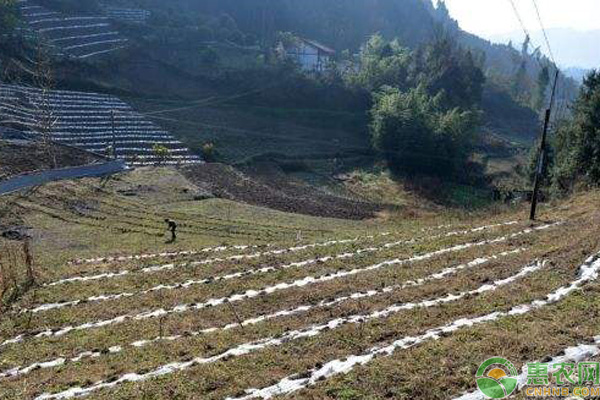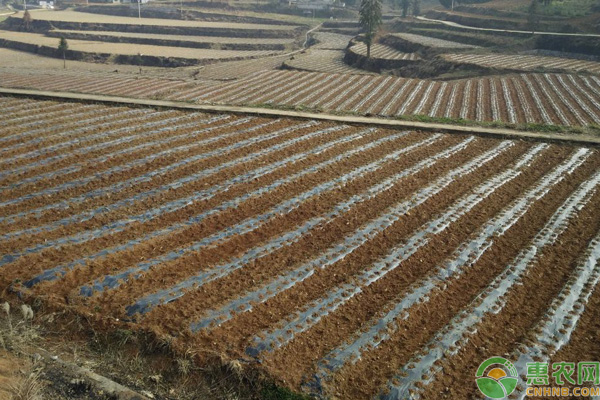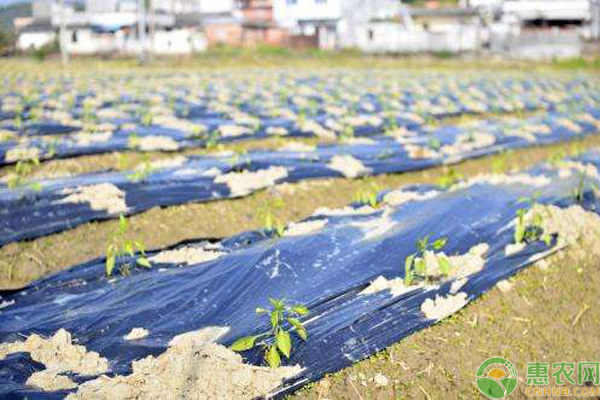China is a large tea growing country and is widely cultivated in various regions, especially in the Yangtze River Basin. For the cultivation of tea gardens, the most common cultivation technique is “mulch teaâ€. By using this cultivation method, the survival rate of seedling transplanting can be effectively improved, so what exactly is done? The specific cultivation techniques are as follows.

Technical points of cultivation techniques of plastic film tea
1. Soil selection
Suitable for the growth of clonal tea seedlings: pH value of 4.5 ~ 6.0; back side of the sun, is conducive to early spring germination. The depth of the soil is above 1 m, the groundwater level is below 1 m, the soil organic matter is 1.5%, and the fertility is relatively high. Adequate water supply is conducive to irrigation and drainage.
2, planting spacing
The single-layer dense planting of the pumping and changing soil should be carried out according to the row spacing of 130-150cm. The wide and narrow rows of dense planting row spacing is 150-170cm, the groove width is 60cm and the depth is 50cm. The bottom manure such as foot manure and compost are backfilled to the trough flat or slightly lower. It is also possible to plant seedlings one month after the ripening.
3, variety selection
The selected varieties should be comprehensively considered in terms of adaptability, stress resistance, high yield, and high quality. The Yangtze River Basin should be selected with medium-leaf, high-quality early and early buds, and the clonal tea plantation should be built in the future. , Pingyang Tezao, Longjing 43 and Fuding Dabai Tea, Shucha Zao, Bai Mi Zao are the main varieties. The quality of seedlings should meet the standards set by the state.

4, planting time and method
The best time for transplanting tea seedlings in the Yangtze River Basin is from mid-October to mid-November, followed by late February to early March. In the cultivation process, it is generally a single dense planting interval of 130-150cm, a plexus distance of 15cm, two plants per plexus, and 667 square meters planting 6000-7000 plants. The width of the narrow and narrow rows of densely planted plants is 120-140cm, the narrow row spacing is 30cm, the cluster distance is 20cm, the T-shaped seedlings are planted, 2 plants per cluster, and 667-square plants are planted 8000-9000 plants. For fields with poor soil structure or high pH value, 667 square meters should be exchanged for 10-15 cubic meters of fine loess (pH 5.0-5.5).
Planting method: firstly plant the shallow ditch in the single or double row in the pumping maturation line, take the seedlings in one hand, buck the soil in one hand, compact the roots, and cultivate the soil to the mud door; each seedling is poured with 1 kg of root water; 3 to 5 cm on the mud door; finally, the seedling height of the ground is 15 cm, and the excess shoots and tender leaves are cut off.
5, watering the ground
Before the film is covered, the soil is first prepared to prevent the tea from damaging the mulch film, and then the water is poured, or the film is covered with the rain after the rain. It is best to use a film with a thickness of 0.005 mm and a width of 800 mm to cover. If you want to prevent weeds, you can use a black mulch. The length of the film can be determined according to the length of the tea line. The 667 square meter mulch is 1-1. 5 kg. . First cover the tea line with a mulch film, then cut the top film of the tea seedlings to expose the tea seedlings, and then compact the membrane around the membrane and the root of the seedlings with fine soil.
6, film management
After the cover film is completed, it is necessary to check it. If the film is found to be damaged, it needs to be compacted with soil in time. It is necessary to ensure that a large number of steam beads are formed under the film. However, it is not necessary to use the mulch film protection after the spring and summer seasons. If the film has been weathered in mid-August, it is necessary to remove the residual film by fertilizer removal.

Then there is a reasonable intercropping. In the first year, in the summer, you can plant a row of corn in the wide line spacing. You should do a good job of shading the tea seedlings. In the winter, if you are planting cabbage, radish, etc., you need to stop planting other crops in the tea garden with more than 2 full ages.
Then you have to do the fertilizer application. In May, the first top dressing can be carried out. The hole can be fertilized in the middle of the narrow line, and then the hole is sealed with the soil. The amount of use is 8 kg for 667 square meters of urea or 8-10 for thin water, and then once a month. The dosage is gradually increased.
Finally, the tea tree is shaped and trimmed. When the tea seedling is as high as 30 cm, it is trimmed 20 cm from the ground for the first time. In the future, when you grow 20 cm, leave a 15 cm flat cut. When the seedling height reaches 50 cm, you can start picking.
What is Indoor PTZ Camera
PTZ: In the security monitoring application, it is the abbreviation of Pan/Tilt/Zoom, representing the pan tilt omnidirectional (up and down, left and right) movement, lens zoom and zoom control.
PTZ: In the security monitoring application, it is the abbreviation of Pan/Tilt/Zoom, representing the pan tilt omnidirectional (up and down, left and right) movement, lens zoom and zoom control.Automatic tracking is divided into three types: one is through embedded video encoder, also known as intelligent visual server; the other is PC software; the other is to directly write the tracking algorithm to DSP chip, and then design the DSP chip as a hardware circuit on the high-speed ball motherboard, and the high-speed ball is directly read. Among the three types, the third type is used most in the current market.
The intelligent vision PTZ automatic tracking and monitoring system consists of an intelligent vision server (responsible for intelligent analysis and command) and a high-speed spherical camera (responsible for tracking targets). The automatic PTZ intelligent tracking function enables the camera to automatically PTZ drive its own PTZ and zoom lens, and automatically control the PTZ camera to rotate the PTZ in all directions and zoom the lens, and perform visual oriented automatic tracking for the locked moving target, so as to ensure that the tracking target continues to appear in the center of the lens with a close-up image, so that the security personnel can see the information more clearly, It can also be used for obtaining evidence afterwards. The automatic PTZ tracking module makes up for the narrow field of vision of fixed camera monitoring, which is an essential function of a perfect security monitoring system.
The intelligent vision PTZ automatic tracking and monitoring system has the target analysis function, and is equipped with a high-resolution camera, a large magnification optical zoom lens and a high speed PTZ, which can automatically capture suspicious targets quickly and accurately. By setting the preset position intelligent vision PTZ automatic tracking monitoring system, the preset position scanning, automatic cruise and other functions can be realized, and many special requirements of intelligent monitoring can also be realized. In addition, the intelligent vision PTZ automatic tracking and monitoring system also has the advantages of beautiful appearance and strong concealment, so it is very suitable for public security intelligent monitoring applications in airports, squares, rail transit, villas, government administrative units, military regions, museums and other types of places.
The automatic PTZ tracking and monitoring system integrates optics, electronics, machinery, information processing and network, and is composed of camera, power transmission, motion control device, image analysis, recognition, compression and communication based on high-speed parallel processing. It has the functions of video camera, position control, orientation and lens preset, moving object detection, recognition and tracking, flame and smoke detection and alarm, etc. It can be widely used in buildings, banks, airports, stations, customs, transportation, power, factories and mining enterprises and other security monitoring occasions.
Indoor PTZ Camera,Indoor PTZ Camera,Surveillance Wireless Security Camera,Wireless Security CCTV
Indoor Wifi HD PTZ Camera,Indoor PTZ Camera Security,Surveillance Wireless Security Camera,Wireless Security CCTV
Shenzhen Fuvision Electronics Co., Ltd. , https://www.outdoorsolarcameras.com